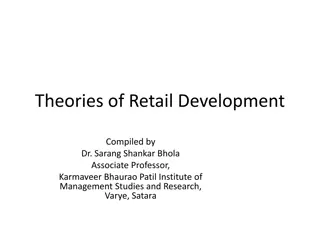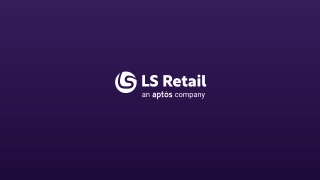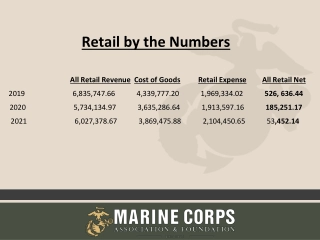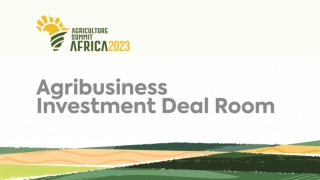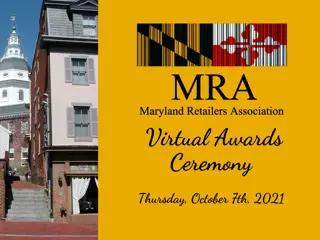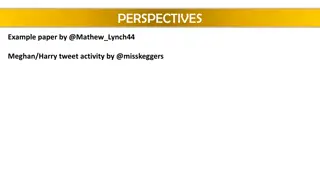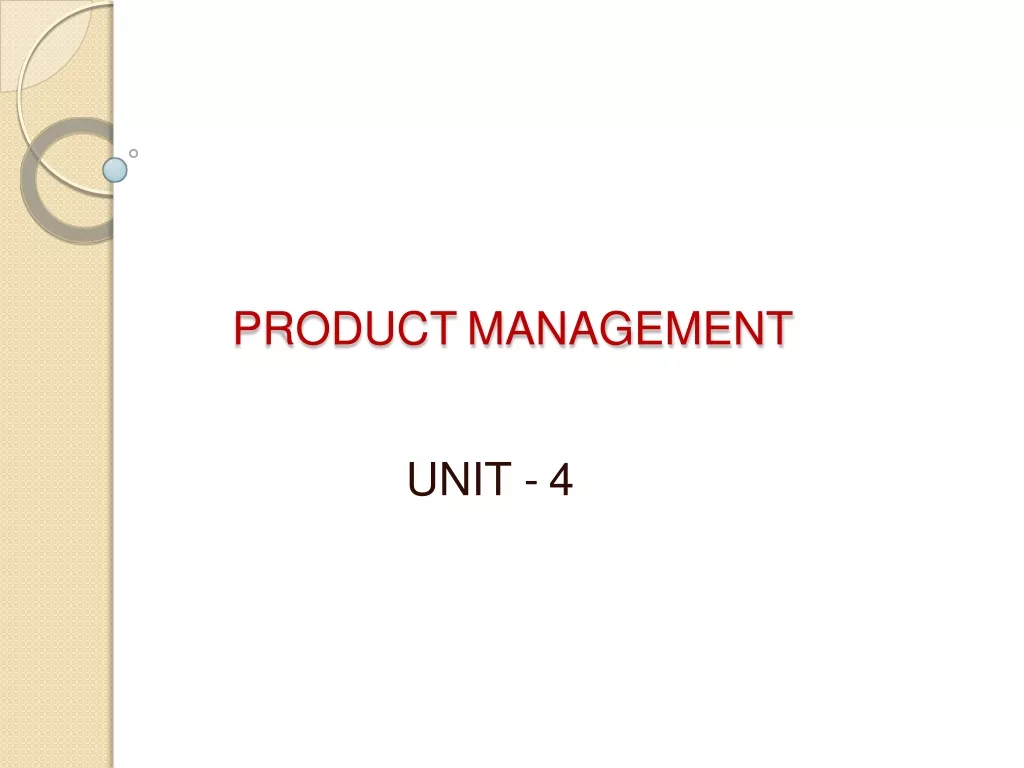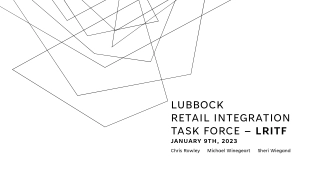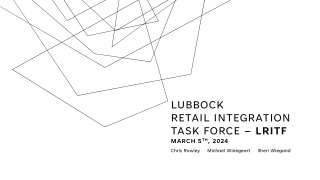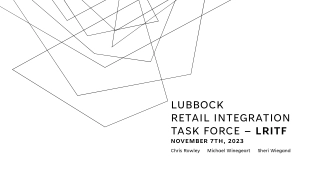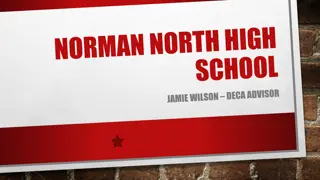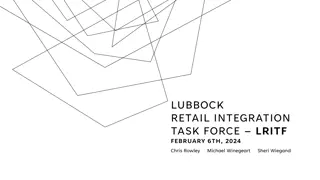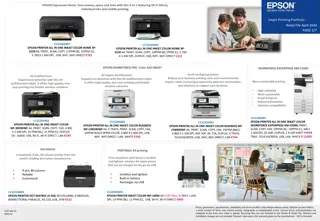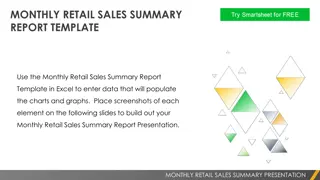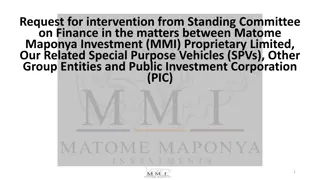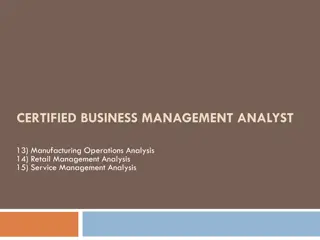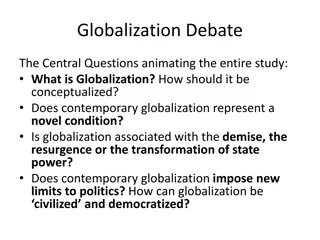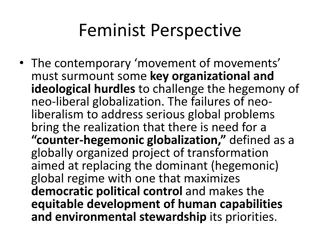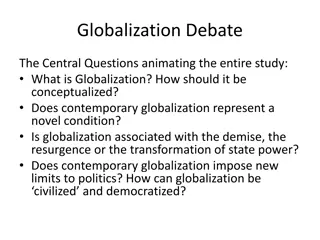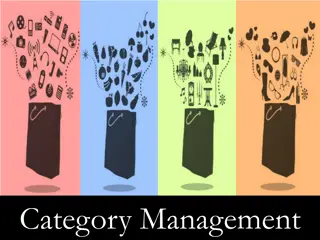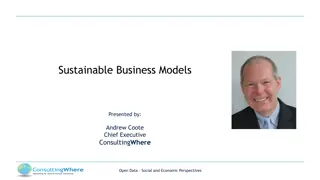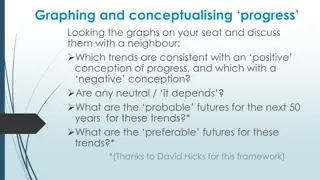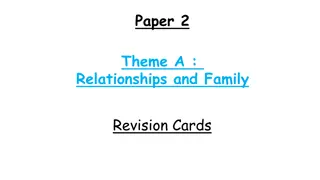Global Retail Management Perspectives
Explore the world of retailing, from global to local perspectives. Learn about retail institutions, e-tailing, and customer-centric retail management practices for a seamless shopping experience. Dive into the characteristics and significance of the retail industry.
Download Presentation

Please find below an Image/Link to download the presentation.
The content on the website is provided AS IS for your information and personal use only. It may not be sold, licensed, or shared on other websites without obtaining consent from the author. Download presentation by click this link. If you encounter any issues during the download, it is possible that the publisher has removed the file from their server.
E N D
Presentation Transcript
Retail Management MSMSR/MBA/404 (M) Dr. Akshita Sharma Asst. Prof. (MSMSR) MATS University, Pandri, Raipur (C.G.)
Text Book LambaA, Retail marketing , TMH Barry Berman and Joel R Evans, Retail Management A strategic approach , Pearson Education Bajaj, Retail Management, 2E, ISBN: 9780198061151, Oxford University Press. Levy & Wertz: Retailing Management, Irwin.
MODULE I Retail Management: an overview of global and Indian retailing, Organized vs. Unorganized retailing. The retailing concept and its framework; planning, building and sustaining relationship in retailing. Retail Institutions: its types and its characteristics, its facilities, retail chains. E-tailing.
Retailing World of Retailing: Retailing is a global, high-tech industry that plays a major role in the global economy. About one in five U.S. workers is employed by retailers. Increasingly, retailers are selling their products and services through more than one channel such as stores, Internet, and catalogs. Firms selling services to consumers, such as dry cleaning and automobile repairs, are also retailers. Retail management: The various processes which help the customers to procure the desired merchandise from the retail stores for their end use refer to retail management. Retail management includes all the steps required to bring the customers into the store and fulfill their buying needs. Retail management makes shopping a pleasurable experience and ensures the customers leave the store with a smile. In simpler words, retail management helps customers shop without any difficulty.
What is Retailing? Most common form of doing business It consists of selling merchandise from a permanent location (a retail store) in small quantities directly to the consumers. These consumers may be individual buyers or corporate. Retailer purchases goods or merchandise in bulk from manufacturers directly and then sells in small quantities Shops may be located in residential areas, colony streets, community centers or in modern shopping arcades/ malls.
Meaning of Retailing: According to Kotler: Retailing includes all the activities involved in selling goods or services to the final consumers for personal, non business uses. A process of promoting greater sales and customer satisfaction by gaining a better understanding of the consumers of goods and services produced by a company. Characteristics of Retailing: 1. Direct interaction with customers/end customers. 2. Sale volume large in quantities but less in monetary value 3. Customer service plays a vital role 4. Sales promotions are offered at this point only 5. Retail outlets are more than any other form of business 6. Location and layout are critical factors in retail business. 7. It offers employment opportunity to all age
Store Retailing by Store based Strategy Food Retailers 1. Departmental stores. 2. Convenience Store. 3. Full Line Discount. 4. Conventional Supermarket. 5. Specialty Stores 6. Food Based Superstore 7. Off Price Retailer. 8. Combination Store. 9. Variety Store. 10. Super Centres 11. Flea Market. 12. Hypermarket. 13. Factory Outlet. 14. Limited Line Stores. 15. Membership Club.
Store Retailing by Store based Strategy Food Retailers 1. Department Store : Department stores are large retailers that carry wide breadth and depth of products. They offer more customer service than their general merchandise competitors. Are named because they are organized by departments such as juniors, men s wear, female wear etc. Each department is act as ministore . Means the each department is allocated the sales space, manager and sales personnel that they pay an attention to the department. IMC programme for each department is different and particular. Department store utilizes various sources for marketing communication. Due to overstoring most of the budget are spending on advertising, couponing and discounts. Unfortunately the use of coupons diminishes profits and creates a situation where consumer does not buy unless they receive some type of discount. 2) Convenience stores: Convenience stores are located in areas that are easily accessible to customers. Convenience store carry limited assortment of products and are housed in small facilities. The major seller in convenience stores is convenience goods and non alcoholic beverages. The strategy of convenience stores employ is fast shopping, consumer can go into a convenience stores pick out what they want, and check out relatively short time. Due to the high sales, convenience store receives products almost daily. Because convenience store don t have the luxury of high volume purchase.
Store Retailing by Store based Strategy Food Retailers 3) Full line Discount Stores : It conveys the image of a high volume, low cost, fast turnover outlet selling a broad merchandise assortment for less than conventional prices. It is more to carry the range of products line expected at department stores, including consumer electronics, furniture and appliances. There is also greater emphasis on such items as auto accessories, gardening equipment, and house wares. Customer services are not provided within stores but at centralized area. Products are sold via self service. Less fashion sensitive merchandise is carried. 4) Specialty Store: Specialty store carry a limited number of product within one or few lines of goods and services. They are named because they specialize in one type of product. Such as apparel and complementary merchandise. Specialty store utilizes a market segmentation strategy rather than typical mass marketing strategy when trying to attract customers. Specialty retailers tend to specialize in apparel, shoes, toys, books, auto supplies, jewellery and sporting goods. In recent years, specialty stores have seen the emergence of the category killer. Category killers (sometimes called power retailer or category specialty) are generally discount specialty stores that offer a deep assortment of merchandise in a particular category.
Store Retailing by Store based Strategy Food Retailers 5. Off Price Retailer- Definition: Off-price retailers are retailers who provide high quality goods at cheap prices. They usually sell second-hand goods, off-the-season items etc. Description: These retailers offer inconsistent assortment of brand name and fashion-oriented soft goods at low prices. They buy manufacturer irregulars, seconds, closeouts, canceled orders, overruns, goods returned by other retailers and end-of-season closeout merchandise.
Store Retailing by Store based Strategy Food Retailers 6. Variety Store-Avariety store (also five and dime (historic), pound shop, or dollar store) is a retail store that sells general merchandise, such as apparel, automotive parts, dry goods, toys, hardware, home furnishings, and a selection of groceries. It usually sells them at discounted prices, sometimes at one or several fixed price points, such as one dollar, or historically, five and ten cents. Variety stores do not include larger formats: general merchandise superstores (hypermarkets) such as Target and Wal- Mart. Warehouse clubs like Costco, grocery stores, and department stores are also not considered variety stores
Store Retailing by Store based Strategy Food Retailers 7) Flea Market -Flea market is a literal transaction of the French aux puces, in outdoor bazaars in Paris. A flea market is the outdoor or indoor facility that rent out space to vendors who offer merchandise, services and other goods that satisfy the legitimate needs of customers. Flea market provides opportunity for entrepreneur to start business at low price. A flea market consist of many retail vendors offering a variety of products at discount price at places where there is high concentration of people. On specific market days they assemble for exchange of goods and services. 8. Factory Outlets -Factory outlets are manufacturer owned stores selling manufacturers closeouts, discontinued merchandise, irregulars, cancelled orders, and sometimes in seasons, first quality merchandise. 9) Membership Clubs -A membership club appeals to price conscious consumers, who must be a member of shop there. It breaks the line between wholesale ling and retailing. Some members of typical club are small business owners and employee who pay a nominal annual fee and buy merchandise at wholesale prices; these customers make purchase for use in operating their firm or for personal use. They yield 60% of total club sale. The bulk members are final consumers who buy exclusively for their own use; they represent 40 %of overall sales.
Store Retailing by Store based Strategy Food Retailers 10. Conventional supermarket.- Conventional supermarket is essentially large departmental stores that specialize in food. According to the food marketing institute, a conventional supermarket is a self service food store that generates an annual sales volume of $2 million or more. These stores generally carry groceries, meat and produce products. A conventional food store carries very little general merchandise. 11. Food Based Superstore - One of the biggest trends over the past twenty years in food retailing has been the development of superstore. Superstores are food based retaliates that are larger than the traditional supermarket and carry expanded service dairy, bakery, seafood and non food sections. Supermarket varies in size but can be as large as 150000 sq ft. Like combination stores food based superstore are efficient, offer people a degree of one stop shopping stimulate impulse purchase and feature high profit general merchandise. 12. Combination Store - Because shoppers have been demanding more convenience in their shopping experience, a new type of food retailers has been emerging. This type of retailer combines food items and non food items to create one stop experience for the customer. Combination stores are popular for the following reasons. They are very large from the 30000 to 100000 or more sq ft. this leads to operating efficiencies and cost savings. Consumer like one stop shopping and will travel further to get to the store. Impulse sales are high.
Store Retailing by Store based Strategy Food Retailers 13. Super Centers and Hypermarkets - Super centre is a combination of a superstore and discount store. Supercenter developed based on the European Hypermarkets, an extremely large retailing facility that offers many types of product in addition to foods. In supercentre more than 40 percent of sales come from non food items. Super Centre is fastest growing retail category and encompasses as much as sales. Wal-Mart is category leader with 74 percent share of super centre retail share. 14. Warehouse Clubs and Stores- Warehouse clubs and stores were developed to satisfy customers who want to low prices every day and are willing to give up services needs. These retailers offer a limited assortment of goods and services, both food and general merchandise, to both end users and midsize businesses. The stores are very large and are located in the lower rent areas of cities to keep their overhead low cost low. Generally, warehouse clubs offer varying types of merchandise because they purchase product that manufactures have discounted for variety of reasons. Warehouse clubs rely on fast moving, high turnover merchandise. One benefits of this arrangement is that the stores purchase the merchandise from the manufacture and sell it prior to actually having to pay the manufacturer.
Store Retailing by Store based Strategy Food Retailers 15. Limited Line Stores - Limited line store also known as box stores or limited assortment stores, represent a relatively small number of food retail stores in the United States. Limited line store are food discounters that offer a small selections of products at lows prices. They are no frills stores that sell products out of boxes or shippers. Limited line stores rarely carry any refrigerated items and are often cash and carry, accepting no cheque or purchase bags from the retailers. In limited line store, the strategy is to price products at least 20 percent below similar products at conventional supermarkets.
Non Store Retailing 1. Direct Marketing. 2. Electronic/Internet/E- Direct Selling. 3. Vending Machines 4. Catalog Marketing 5. Franchising
Non Store Retailing Direct Marketing - Direct marketing is defined as an interactive system of marketing, which uses non personal media of communication to make a sale at any location or to secure measurable response. Direct marketing is a method wherein the manufacturer or producer sells directly to retailer, user or ultimate consumers without intervening intermediaries. This offers flexibility with maximum controls of sales efforts and marketing information feedback. Various forms of Direct Marketing-telemarketing, Direct mail marketing, television marketing. Direct Selling- In contrast to direct marketing, which involves no personal contact with consumers, direct selling entails some type of personal contact. This contact can be at the consumer home or at an out of home location such as the consumer office.
Non Store Retailing Vending Machines- Vending machines represents an additional class of retail institutions. Essentially, vending is non store retailing in which the consumer purchase a product through a machine. The machine itself takes care of the entire transaction, from taking the money to providing the product. Vending machine offerings range from typical products such as soft drinks and candy to insurance, cameras, phone calls, phone cards, books, paper and pens. Catalog Marketing- Mail Orders marketing/Catalog Marketing, also called as mail order business, is one of the established methods of direct marketing. Since mail orders marketers use catalogues for communication with the consumer, this form of marketing is often referred to as catalogue marketing. In these methods the consumer become aware of product through information furnished to them by the marketer through catalogues dispatched by mail.
Non Store Retailing Franchising - Franchise in French means privilege or freedom. Franchising refers to the methods of practicing and using another person s philosophy of business. The franchisor grants the independent operators the right to distribute its products, techniques and trademarks for a percentage of gross monthly sales and royalty fee. Various tangibles and intangibles such as national or international advertising, training and other support services are commonly made available by the franchisor. Agreements typically last five to twenty years, with premature cancelation or termination of most contracts bearing serious consequences for franchisees.
Organized vs. Unorganized retailing ORGANIZED RETAILING The Organized retail sector is regulated by the government and the employment terms and working hours per day in this sector are fixed. The Organized retail sector is governed by various acts like Bonus act, factories act, minimum wages act, and PF act, etc. Government rules are strictly followed in the Organized retail sector. Regular monthly salary is given to employees on the monthly basis. There is job security for employees in the Organized retail sector. UNORGANIZED RETAIL The Unorganized retail sector is not regulated by the government and employment terms and working hours per day are not fixed in this sector. There is no government act to govern the unorganized retail sector. No government rules are followed in the unorganized retail sector. Daily wages are given to employees. The working hours are not fixed in the unorganized retail sector.
Organized vs. Unorganized retailing ORGANISED RETAILING Workers in the organized retail sector are paid additionally for the extra number of working hours. Employers make a contribution to the provident fund of an employee. Salary given to employees is equal to the salary prescribed by the government. The increment is given to employees n regular basis (mostly annually). Employees working in the organized retail sector get add on benefits such as a pension, medical facilities, leave compensation, travel compensation, etc. UNORGANISED RETAILING Workers in the unorganized retail sector do not get paid additionally for the extra number of working hours. Employers do not make any contribution to the provident fund of an employee. Less salary is paid to employees than the salary prescribed by the government. Very rarely increment is given to employees. No benefits or perquisites are provided to employees working in the unorganized retail sector.
The retailing concept and its framework Companies like Target or Wal-Mart follow four company-level retailing concepts in every activity they engage in. By adhering to these principles, it allows them to run a tight operation, fulfill their customer s expectations, and generates value for business overall. 1. Customer orientation- The retailer determines the attributes and needs of its customers and endeavors to satisfy these needs to the fullest. It establishes and monitors standards of customer satisfaction and strives to meet the clientele s needs and expectations related to the product or service sold by the business. Business strategies that tend to reflect a customer orientation might include: developing a quality product appreciated by consumers; responding promptly and respectfully to consumer complaints and queries, and dealing sensitively with community issues.
The retailing concept and its framework 2. Coordinated effort- The retailer integrates all plans and activities to maximize efficiency. Today, retailers are integrating their physical stores with e-commerce sites, a telephone sales channel, and an eBay type solution to move out dead inventory items as rapidly as possible. Some retailers are sophisticated enough to be emphasizing different merchandise in each channel. The whole multi-channel system is generally tied together with a database that captures customer information, manages inventory, identifies buying trends and facilitates more effective merchandise management.
The retailing concept and its framework 3. Value-driven Four unique management strategies- The retailer offers good value to customers, whether it be upscale or discount. This means having prices appropriate for the level of products and customer service. Here are four strategies you could try today to drive value: 3a. Hoshin Kanri- The Hoshin Kanri technique is often described as a target-means strategy. The Japanese word hoshin means shining metal pointing direction ; kanri means management or control. It is described as a system for translating an organization s vision and objectives into actionable and measurable strategies throughout the company. It is a process for focusing many resources on a few high priority issues to achieve a breakthrough.
The retailing concept and its framework The greatest strength of this system is its ability to translate qualitative, executive goals into quantitative, achievable actions. It has proven its usefulness in the implementation of concepts like Total Quality Management (TQM) and Total Quality Environmental Management (TQEM). It generally describes characteristics of the product or process as a function of the characteristics of the organization that produces it. From the Hoshin Kanri perspective, the success of the product or process development is directly linked to the ability of an organization to put into practice its strategic goals. 3b. Kaizen- Kaizen is often translated in western literature as ongoing, continuous improvement. In contrast to the traditional emphasis on revolutionary, innovative change on an occasional basis, Kaizen advocates uninterrupted, ongoing incremental change.
The retailing concept and its framework Originally a Buddhist term, Kaizen comes from the words Renew the heart and make it good . Adoption of the Kaizen concept requires changes in the heart of a business s corporate culture and structure, since Kaizen requires companies to translate their corporate vision into every aspect of a company s operational practice. Kaizen can be implemented in corporations by improving every aspect of a business process in a step-by-step approach, while gradually developing employee skills through training and increased involvement. The key areas in implementing Kaizen are: Shop floor GENBA Product GENBUTSU The facts GENJITSU By pursuing improvements in the three GENs , a manager develops an eye for problems. Gradual enhancements to the key operations product development, manufacturing, service and sales multiply into greater success, sustainable competitiveness and good business performance.
The retailing concept and its framework 3c. Poka-Yoke- Poka-Yoke is the Japanese term for mistake- proofing. It is designed either to prevent an error from happening or to make an error obvious at a glance.Therefore, a product development process that respects Poka-Yoke logic aggressively seeks to eliminate the possibility of errors and waste and to increase resource efficiency in the entire product lifecycle. 3d. Multi-disciplinary optimization (MDO)- Multidisciplinary optimization (MDO) is an emerging discipline that relies on mathematics, statistics, operations research and computer science. Objectives and environmental constraints are stated in terms of mathematical equations, and the best solution obtained via a solution of those equations.
The retailing concept and its framework There is a more qualitative version of the MDO method that uses the same algorithm. It is more comprehensive than the quantitative method, since it includes all relevant components. On the other hand, in this broader version of MDO, a number of components are not easily quantified. The qualitative MDO must therefore include a degree of subjectivity. MDO is a useful tool for product or process optimization. The equations can be defined so that the objective is to maximize quality and resource efficiency and to minimize cost, and thus to maximize value. However, it is important to identify and define all design parameters in order to achieve the desired result.
The retailing concept and its framework 4. Goal orientation- The retailer sets goals and then uses its strategy to attain them. Goal orientation is the degree to which a person or organization focuses on tasks and the end results of those tasks. Strong goal orientation advocates a focus on the ends that the tasks are made for instead of the tasks themselves and how those ends will affect either the person or the entire company. Studies have also used goal orientation to predict sales performance, goal setting, learning and adaptive behaviors in training, and leadership. Conclusion: Recognize how you help, improve upon it, and measure the difference- These four principles act as an anchoring philosophy to retail success. Unfortunately, this concept is not grasped by every retailer. Some are indifferent to customer needs, plan haphazardly, have prices that do not reflect the value offered, and have unclear goals.
The retailing concept and its framework Some are not receptive to change, or they blindly follow strategies enacted by competitors. Some do not get feedback from customers; they rely on supplier reports or their own past sales trends. The retailing concept is straightforward. It means communicating with shoppers and viewing their desires as critical to the firm s success, having a consistent strategy (such as offering designer brands, plentiful sales personnel, attractive displays, and above-average prices in an upscale store); offering prices perceived as fair (a good value for the money) by customers; and working to achieve meaningful, specific, and reachable goals. However, the retailing concept is only a strategic guide. It does not deal with a firm s internal capabilities or competitive advantages but offers a broad planning framework.
Planning, Building and Sustaining relationship in Retailing 1. Analyze your market- While there are many situations where trusting your gut is a wise step, the retail planning process is definitely not one of them. To make sure that you have a realistic plan of attack, take some time to understand the market space you re in. A great way to do this is through the tried-and-true SWOT (strengths, weaknesses, opportunities, and threats) analysis of your competition. A retail SWOT analysis will help you understand the internal and external factors affecting your competition and, by extension, possibly you so you can gain actionable insights for your own retail business. For example, your competition s strengths could involve their USPs (unique selling propositions), their 24/7 customer service support, or cheaper wholesale prices. Other options could be less tangible, such as their brand recognizability or authenticity, but could be equally important.
Planning, Building and Sustaining relationship in Retailing When it comes to weaknesses, they could range from a lack of an online presence, fewer payment options, limited selections of items, or anything that could potentially limit the retail business s competitive advantage. Opportunities can be both internal or external, such as the opportunity to open a new location or increase market share, or a sudden interest in retail vacancies from the general public. But these can also be more digital or long-term, such as the use of AI in customer service. Finally, for threats, these could be things like a new competitor opening in the same niche, price wars, or lack of staffing or supply chain issues. By taking time to analyze your competitors, you won t be caught off- guard and can implement proper risk management strategies in your retail planning process.
Retail Institutions: its types Retail institution refers to the basic format or structure of business. A specialist store or a small local store may have a very intimate relationship with its customers, with transactions being made on a face-to-face, first name basis. The business institutions or persons who sell goods to final consumers are called retailers. There are different types of such retailers. For the systematic study they can be divided in different classes, such as on the basis of ownership, on the basis of product line, on the basis of sales volume and on the basis of operation method. 1. Types of retailers on the basis of ownership On the basis of ownership, retailers are divided into four classes as follows: i. Independent stores- The retailing shops operated under the ownership of a single person is called independent stores. Because such retailing institutions are operated under the management, ownership, direction and control of a person, they are called independent stores.
1. Types of retailers on the basis of ownership ii. Chain stores- Chain stores are those retailing institutions, which are operated by a company under its ownership and management. Stores are opened at different places and they are operated under the management and control of company's central office. iii. Contract chain- Contract chain means a business institution, which is operated by private entrepreneurs under their own management. But they perform some business related functions such as purchase of goods of same nature, branding , advertising etc. jointly with the retailers. The retailers selling same nature goods enter into contract for buying goods. Buying huge amount of goods in this method reduces price of goods and the cost also is borne jointly due to which profit can be increased. iv. Consumer stores- The retailing shops operated under the ownership of consumers are called consumer stores. The consumers in association establish such retailing shops to get rid of the exploitation of middlemen. Generally, consumer stores purchase goods directly from producers and sell them to its members at cheap rate.
2. Types of retailers on the basis of product line Retailers can be divided in three classes on the basis of product line as follows: i. General stores- General stores are such retailing shops where all kinds of goods are found or bought and sold. In such stores all the necessary goods for the local consumers are made available. Foodstuffs, clothes, sports materials, household goods, medicines etc are found in such stores. ii. Single line stores- Some retailers deals in only the goods of certain product line. Such retailers achieve specialization in selling some kinds of goods. Single line retailers involve in dealing in goods belonging to one product line like goods of household uses, medicines, electronic goods, motor cars, clothes etc. iii. Specialty stores- The retailers who deal in only one kind of products of a certain product line are called specialty stores or retailers.
3. Types of retailers on the basis of volume of sales Retailers can be divided in two classes on the basis of volume of sales as follows: i. Small-scale retailers- The retailers who buy and sell small quantity of goods are called small-scale retailers. Mostly, the small-scale retailers who operate business under sole ownership or partnership firms keep small stock of goods. They purchase necessary goods from wholesalers and sell to local consumers. ii. Large-scale retailers- The retailers who buy large amount of goods, keep in store and sell them are called large-scale retailers. Such businessmen give emphasis to division of labor and specialization to bring effectiveness in their business. The financial position of such retailers remain relatively strong and have risk bearing capacity.
4. Types of retailers on the basis of method of operation On the basis of method of operation, retailers can be classified as follows: i. In-store retailing- The retailers who sell different goods opening their shops are called shopkeepers or in-store retailers. Customers buy necessary goods going to retailers' shops. The retailers from small-scale retailing shops to large-scale retailing shops like departmental stores, supermarkets, multiple shops etc from which goods are sold to final consumers, include in in-store retailing class. ii. Non-store retailing- Nowadays, retailers are found selling different goods to consumers without establishing any shop. Similarly, the practice of selling goods visiting door to door of customers is not a new. Other main methods of selling goods without opening any shop are retailing through mail and use of vending machine.
Retail institutes - its characteristics It offers direct interaction with the customers. Small quantity makes large quantity Customer service Point of sales promotion Different forms Location and layout being important Big employment provider.
Retail Chains Chain store or retail chain is a retail outlet in which several locations share a brand, central management and standardized business practices. They have come to dominate the retail and dining markets and many service categories, in many parts of the world. A franchise retail establishment is one form of chain store. In 2005, the world's largest retail chain, Wal-Mart, became the world's largest corporation based on gross sales.
Characteristics A chain store is characterized by the ownership or franchise relationship between the local business or outlet and a controlling business. Difference between a "chain" and formula retail While chains are typically "formula retail", a chain refers to ownership or franchise, whereas "formula retail" or "formula business" refers to the characteristics of the business. There is considerable overlap because key characteristic of a formula retail business is that it is controlled as a part of a business relationship, and is generally part of a chain. Nevertheless, most codified municipal regulation relies on definitions of formula retail (e.g., formula restaurants),in part because a restriction directed to "chains" may be deemed an impermissible restriction on interstate commerce (in the US), or as exceeding municipal zoning authority (i.e., regulating "who owns it" rather than the characteristics of the business). Non-codified restrictions will sometimes target "chains"..
Characteristics A municipal ordinance may seek to prohibit "formula businesses" in order to maintain the character of a community and support local businesses that serve the surrounding neighborhood. Decline Edit Brick-and-mortar chain stores have been in decline as retail has shifted to online shopping, leading to historically high retail vacancy rates. The hundred- year-old Radio Shack chain went from 7,400 stores in 2001 to 400 stores in 2018. FYE is the last remaining music chain store in the United States and has shrunk from over 1000 at its height to 270 locations in 2018. In 2019, Payless ShoeSource stated that it would be closing all remaining 2,100 stores in the US.
E-tailing What Is Electronic Retailing (E-tailing)? Electronic retailing (E-tailing) is the sale of goods and services through the internet. E-tailing can include business-to-business (B2B) and business-to- consumer (B2C) sales of products and services. E-tailing requires companies to tailor their business models to capture internet sales, which can include building out distribution channels such as warehouses, internet webpages, and product shipping centers. Notably, strong distribution channels are critical to electronic retailing as these are the avenues that move the product to the customer.
Assignment Q.1. Describe about store retailers. Q.2. Write short note on :- 1. e-tailing 2. Conventional retailers
MODULE II Retail Planning and Development: Understanding the Retail Customer, Strategic Retail Planning Process, location planning and selection. The wheel of Retailing. Managing retail business: developing retail business, human resources and operation management process.
Retail Planning and Development There is a lot that goes into retailing planning, but here, we break down the steps into three main major phases. Merchandise financial planning (MFP)- First, you start by mapping your financial goals against your retail procurement and sales strategy, which is known as merchandise financial planning (MFP). Merchandise financial planning involves sourcing and buying products your customers want to buy, then pricing and distributing them strategically to yield maximum returns on investment. Financial planning helps to optimize your inventory investment to satisfy consumer demand while preventing excess stock. With careful financial planning, you re spending your money only to procure the inventory you need in a given period of time to meet demand.
Retail Planning and Development Sales planning- Next, you put the above process into action by deploying a sales strategy that allows you to meet your financial goals. This stage is all about coming up with a plan to sell inventory and turn it into profit. Sales planning involves accurate demand forecasting, so you can project the amount of inventory that will be sold in a given period of time. It also involves SKU management and deciding what SKUs will sell and which SKUs might be slower moving. The best way to plan for sales is to look at your competition, research customer buying behavior and trends, and look into historical order data. Inventory planning- Finally, you have the inventory planning process, which involves optimizing your inventory to meet demand and optimize internal costs. Inventory planning consists of understanding what SKUs perform the best through multiple channels, such as location and sales channels (social media and through other retailers). For example, if you sell summer apparel, you ll want to consider where to store the most amount of inventory based on seasonality. You most likely would sell more inventory throughout the year in warmer climates (like California or Florida), then in the Midwest year round.
High-level steps in the retail planning 1. Analyze your market- While there are many situations where trusting your gut is a wise step, the retail planning process is definitely not one of them. To make sure that you have a realistic plan of attack, take some time to understand the market space you re in. A great way to do this is through the tried-and-true SWOT (strengths, weaknesses, opportunities, and threats) analysis of your competition. A retail SWOT analysis will help you understand the internal and external factors affecting your competition and, by extension, possibly you so you can gain actionable insights for your own retail business. For example, your competition s strengths could involve their USPs (unique selling propositions), their 24/7 customer service support, or cheaper wholesale prices. Other options could be less tangible, such as their brand recognizability or authenticity, but could be equally important.
High-level steps in the retail planning When it comes to weaknesses, they could range from a lack of an online presence, fewer payment options, limited selections of items, or anything that could potentially limit the retail business s competitive advantage. Opportunities can be both internal or external, such as the opportunity to open a new location or increase market share, or a sudden interest in retail vacancies from the general public. But these can also be more digital or long-term, such as the use of AI in customer service. Finally, for threats, these could be things like a new competitor opening in the same niche, price wars, or lack of staffing or supply chain issues. By taking time to analyze your competitors, you won t be caught off-guard and can implement proper risk management strategies in your retail planning process.
Steps in Retail Planning 2. Analyze your customers behavior Predicting your customers behaviors can be difficult, but if you want to really understand your clients and connect with them, you ll put in the effort to see how they interact with your retail brand. By understanding what are the demographics in your market, you can start to provide custom-tailored experiences to attract the right audience. That said, don t assume that you know who holds the purchasing power of your retail products. For example, Kraft recently realized that, despite marketing their Mac & Cheese as a kids meal, 60% of households buying from their brand didn t have children, causing a shift in their marketing approach. To avoid surprises like this, take time to understand your customers background, habits, motivations, and even problems they might face during their touch points with your brand. If you empathize with your (potential) customers and put yourself in their shoes, you ll have a sure-fire method of making sure your merchandise planning strategy is a success. By using a mix of quantitative and qualitative methods such as online analytics tools, focus groups, feedback forms, and historical data, you ll be well on your way to a deeper understanding of your customers.
Steps in Retail Planning 3. Set your objectives No matter what branch of retail you re in, setting both short- and long-term goals is absolutely essential. When you re brainstorming on objectives to set, avoid the common pitfall of coming up with a generic objective such as increasing sales. Instead, try to formulate a few SMART goals. A SMART goal is well-formulated and should be specific, measurable, achievable, relevant, and time-bound, and should be based on the above research steps. By asking yourself questions such as What do I want to accomplish? or How will I know when I ve accomplished my goal? , you ll be able to formulate SMART goals in no time. What does a good SMART goal look like?An internal objective could be: Increase the revenue from holiday cards by 50% in both of our locations during November and December. Meanwhile, an external objective could be: Increase the number of 4- and 5-star online customer reviews by 30% over the first quarter of 2022.


